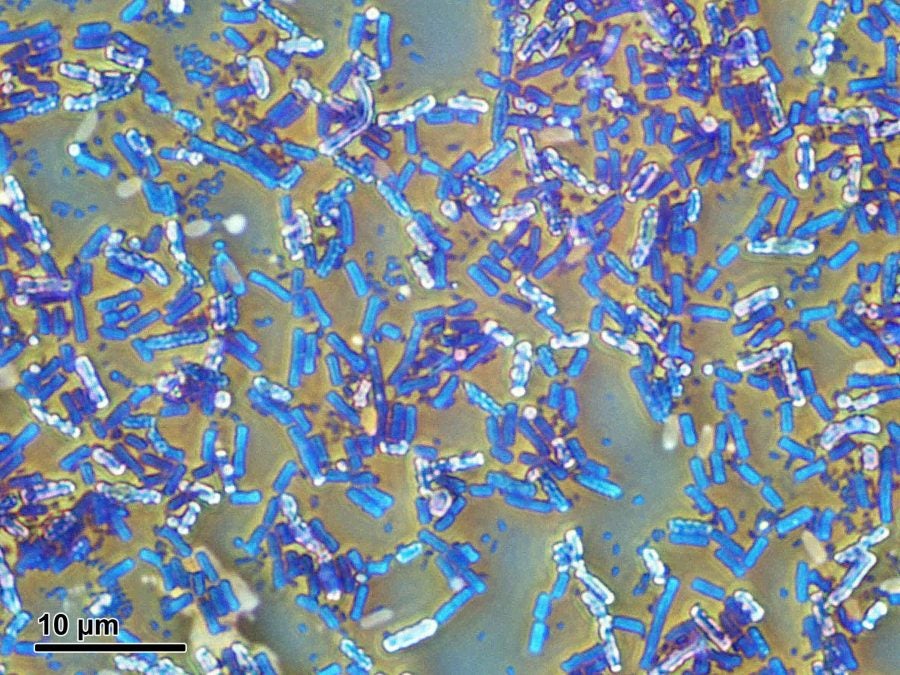
Raytheon BBN Technologies has embarked on an unusual quest to programme bacteria and turn it into sensors under a contract from DARPA. The goal of the project is to create different types bacteria that can detect explosives buried underground and signify their location by glowing.
The first strain of bacteria is the detector, and the second the signifier, working together to indicate the location of buried explosives that would otherwise be invisible to the naked eye. The second strain of bacteria receives the signal from the first saying that explosives are present and emits a glowing light, allowing cameras or unmanned aerial vehicles (UAV) to locate potential threats.
Turning bacteria into biosensors
Principal investigator for the Bio Reporters for Subterranean Surveillance programme at Raytheon BBN Technologies Allison Taggart tells Army Technology: “The major goal of this programme is to safely detect buried explosives, or more specifically TNT buried one metre underground.”
Taggart explains that biosensors, developed under Raytheon’s Subterranean Surveillance programme present a solution to the critical military problem of busied explosives.
“Bacterial biosensors are sensitive and they can detect the chemicals right at the source” Taggart explains, “and once combined with remote systems present a safe way to locate explosives without having to put operators downrange. Whereas current systems require personnel to be deployed on-site or can be less sensitive, biosensors could eventually be a safer option for detection.”
The project is still in its early phases, starting an 18-month journey concluding in 2021, meaning there is still a lot of work to be done until the sensors reach any level of operational capability.
How well do you really know your competitors?
Access the most comprehensive Company Profiles on the market, powered by GlobalData. Save hours of research. Gain competitive edge.

Thank you!
Your download email will arrive shortly
Not ready to buy yet? Download a free sample
We are confident about the unique quality of our Company Profiles. However, we want you to make the most beneficial decision for your business, so we offer a free sample that you can download by submitting the below form
By GlobalDataBacteria has already been programmed to detect explosives; Taggart says that the synthetic biology ‘parts’ for detecting explosive chemicals already exist. Getting the bacteria to propagate a signal up to a metre through the soil to the surface is the challenge.
Theoretically, with a lot of research and development, the bacteria could be dispersed over a large area to reveal all the threats on a mass scale. This, however, is not likely to be a reality anytime soon.
Taggart says: “A big goal of our group is to make our system modular, so we can potentially swap in other sensors or components to detect other chemicals contaminants. Our goal is to create a system that can be used with many different applications.”
Once working, if bacteria can be programmed to detect TNT underground, logic follows that if pointed towards something else the same detection capabilities would apply, allowing the system to respond to evolving threats and priorities as they may become apparent. Another challenge for the project is to figure out how best to pair the bacterial sensors with remote cameras or UAVs.
The TNT sensor Raytheon being is using is known to be highly sensitive, making it an ideal platform for further research.
The technology works by starting with bacteria that functions well in the target environment, in this case, the top layer of soil. Taggart explains sensor parts are ‘integrated into the bacteria’s genome’. The bacteria can then detect chemical signatures as an input and output a programmed response. In this case, the two bacterial strains work hand-in-hand, one detecting explosives and outputting a signal, the other detecting the signal and outputting light, these input and output molecules can be programmed to look for different things, and have different responses.
Taggart says: “That one [the second strain] takes an input from the signal molecule on the first strain and it will output a light signal, something like fluorescence.”
“This illustration shows how scientists might use synthetic biology to turn something ordinary, like a crop of corn, into a sensor that secretly warns of chemical agents in the air”. Image: Raytheon.



